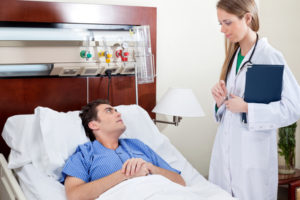The Cleveland Clinic: How to Treat Mold Exposure

The Cleveland Clinic: How to Treat Mold Exposure
Exposure to mold can cause a serious allergic reaction called aspergillosis. The Cleveland Clinic, one of our country’s largest and most respected medical centers, offers more information about this illness along with helpful tips for treatment and prevention.
Who Is Affected by Aspergillosis?
Aspergillosis gets its name from Aspergillus fumigatus, a type of mold that is the primary cause of the illness. Aspergillus is one of the most common forms of outdoor mold, but it can easily be tracked indoors on shoes and clothing.
Healthy people are generally at low risk for aspergillosis, which primarily affects those with compromised immune systems or pre-existing lung conditions. Problems arise when mold spores are inhaled and settle in lung cavities or mucus-filled airways.
Diagnosis, Treatment and Prevention
Symptoms of aspergillosis include:
• Wheezing and coughing, sometimes accompanied by blood or increased mucus
• Fever and/or chills
• Shortness of breath
• Chest pain
These upper-respiratory symptoms are similar to those of general allergic reactions, so it’s important to visit your doctor and rule out other causes.
Aspergillosis is most often treated with oral corticosteroids and anti-fungal drugs, either separately or in combination. Surgery is sometimes necessary when fungus balls called aspergillomas are present in the lungs or other organs.
Since Aspergillus is so common, the best course of prevention is to avoid locations such as construction sites that are likely to have a lot of dust and mold. People at high risk might consider wearing a face mask.
Trust Stern Mold for Efficient and Eco-Friendly NJ Mold Removal
Don’t take chances with your health. Visit our website to learn why Stern Mold is the leader in NJ mold removal for homes and businesses.
